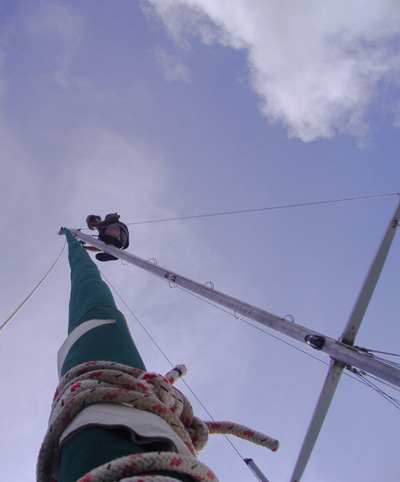An interview of note, some needful reading that made me angry, and in the "Sigh" department...
For a long time I was a big advocate of free-standing rigs. My main issue with standing rigging was its many potential failure points any one of which could make your rig fall down and go BOOM. Take it from someone who had a mast fall down that it's not something you want to do.
My current thoughts on spars and rigging has evolved to the point where I think the most sensible approach is somewhere between the two using a mast with more structural integrity in conjunction with textile rigging. The marriage of the two becomes much less prone to failure as well as more economical.
When I was considering adapting "So It Goes" to junk or lug rig The diameter of a single mast figured out to be ten-inches in diameter which was problematic on several levels. A wood mast of that size done using traditional scantlings was going to be heavier than I thought prudent, the location of said mast would be problematic to the interior layout of the boat, and the cost was more than I was prepared to pay for in materials and time. While I played with various other junk/lug schooner or ketch rigs they all screwed up the interior to the point that I found myself going with the Simplicity Rig which Mark Smaalders designed and has worked out extremely well.
Since then, I’ve put a lot of thought into how I could have done the rig differently and in various ways to make textile rigging better and more affordable. In textile rigging, the problem seems to be that instead of embracing strengths of textile rigging they treat it like wire.
When I look at a rig replacement, the first job at hand is getting rid of those potential failure points. As most rigs fail at the mast to stay and boat to stay intersections, that’s the problem areas that need to be dealt with.
In the boat to stay intersection you have the chainplate, toggle, turnbuckle, and whatever sort of stay termination you’re using, as well as however many clevis pins or shackles are in the mix. The average number of failure points at the chainplate end of the stay is six. Multiply that with the number of stays on a sloop and that equals forty-eight failure points and we haven’t even begun talking about the stay to mast attachments.
Which is why I've been partial towards free-standing masts and rigs. More on those in the next installment...
Listening to an album's worth of Go-Go's coverage
So it goes...





